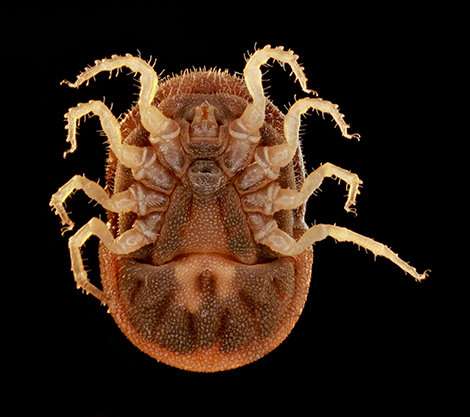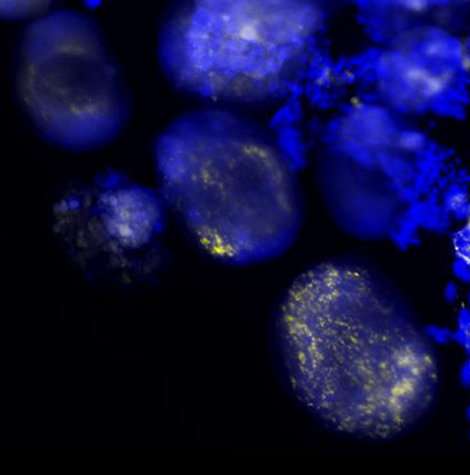Bacteria ensure square meal for bloodsucking ticks

How do ticks live solely on blood? A study presented in Current Biology (May 31, 2018) has elucidated the crucial role played by symbiotic bacteria that synthesize B vitamins. These nutrients are scarcely found in the blood ticks ingest but are essential to their life cycle. Thus ticks cannot survive to adulthood or reproduce without their bacterial symbionts. The study conducted by CNRS and CIRAD researchers has also shown that the bacteria inherited their B vitamin synthesis pathways from a pathogenic ancestor whose genome underwent gradual degradation.
Ticks are major pathogenic vectors and especially well known for the part they play in spreading Lyme and other emerging diseases. Unlike mosquitoes, ticks are strictly hematophagous—that is, they feed exclusively on blood at all stages in their development. But there is a consequence of having such a highly specialized diet. Though blood is rich in some nutrients, it is relatively poor in others, like B vitamins. One hypothesis has offered a solution to the puzzle presented by this unique mode of nutrition: as ticks cannot satisfy vitamin requirements from their blood meals, perhaps bacteria synthesize these compounds for them.
To explain how ticks have adapted to blood-only diets, scientists from the MIVEGEC (CNRS / IRD / University of Montpellier) and ASTRE (CIRAD / INRA / University of Montpellier) research units have examined the microbial communities they harbor. They discovered that a symbiotic bacterium of the genus Francisella is a predominant constituent of the microbial community hosted by the African soft tick (Ornithodoros moubata), a model species. Complete sequencing of the bacterium's genome has confirmed it can produce various B vitamins: biotin (vitamin H), riboflavin (vitamin B2), and folic acid (vitamin Bc). By showing that ticks deprived of the bacterium cease development but resume normal growth upon supplementation with vitamins the microorganism would provide, the researchers demonstrated the role of Francisella in tick nutrition.
Additional analyses made it possible to identify the evolutionary origin of the nutritional symbiosis. Symbiotic Francisella descend from pathogenic bacteria whose genome suffered extensive degradation. This left intact only a subset of their original functional traits, including synthesis of the three mentioned B vitamins. The first appearance of ticks and their later diversification—over 900 species are currently known—were largely conditioned by this symbiosis. The process underscores the important contribution of microorganisms to the ecological diversity of animals and the evolution of new diets.

More information: Duron O, Morel O, Noël V, Buysse M, Binetruy F, Lancelot R, Loire E, Ménard C, Bouchez O, Vavre F, Vial L. Tick-bacteria mutualism depends on B vitamin synthesis pathways. Curr. Biol. 2018 May 31. DOI: 10.1016/j.cub.2018.04.038
Journal information: Current Biology
Provided by CNRS



















